

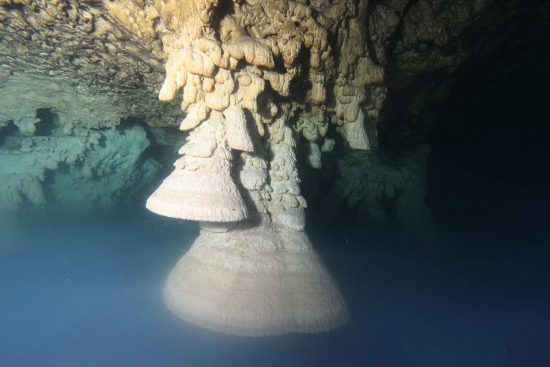
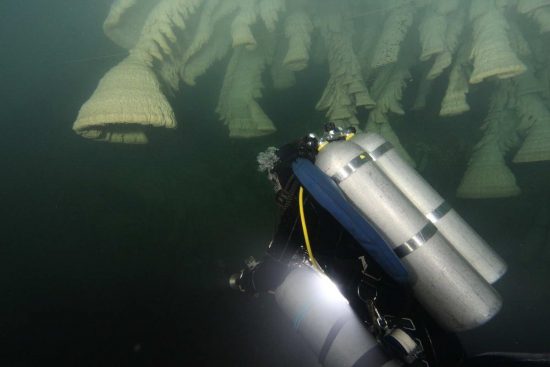
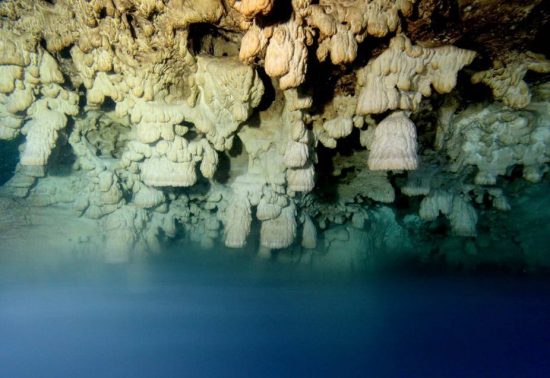
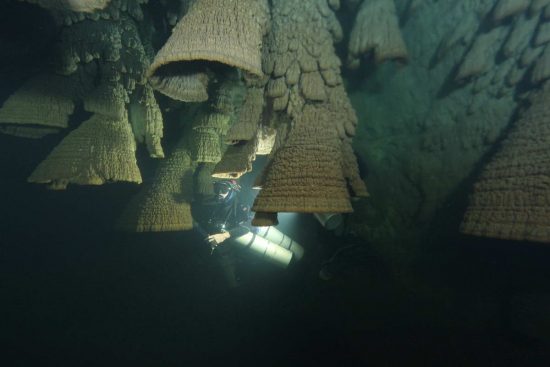
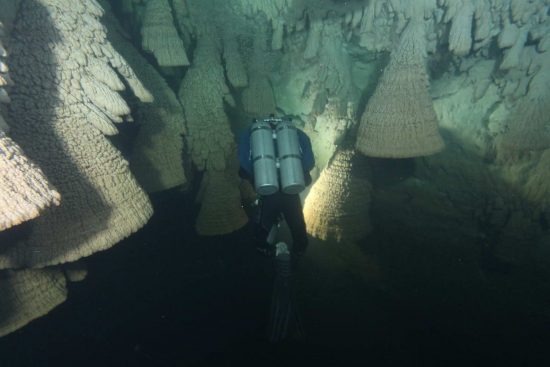
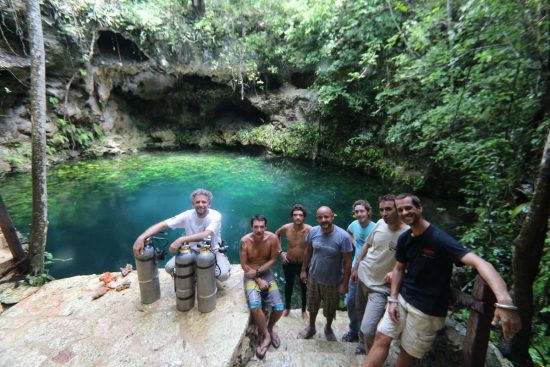
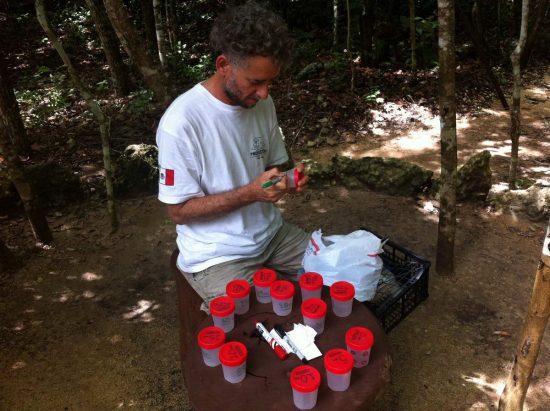
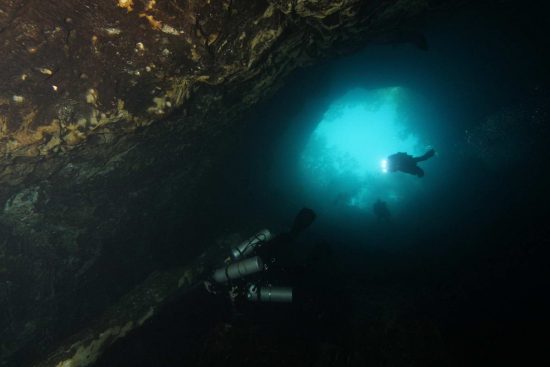
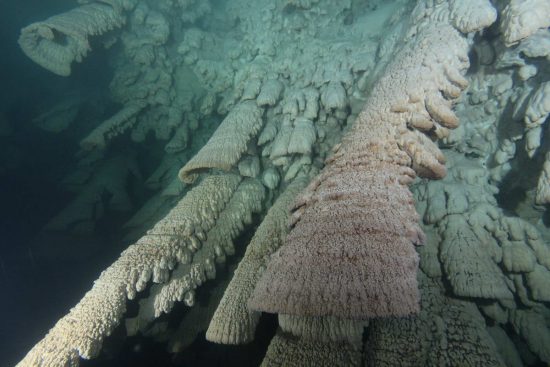
Researchers study how Hells Bells was created
In recent years, scientists have identified a small group of stalactites in which the characteristic calcification process does not occur in a dry environment, but underwater. An example of these formations is the Hells Bells in the El Zapote cave near Puerto Morelos on the Yucatán Peninsula.
Yucatan has a very special landscape. In the course of Earth's history, the limestone soil on the Mexican peninsula eroded and collapsed. The resultant cenotes became filled with rainwater and today represent the entrances to gigantic cave systems. According to Mayan beliefs, these limestone pits are the entrance to Xibalbá, the underworld of the Mayans. The name ‘Xibalbá’ means ‘place of fear’ in English. At that time, the people made animal and human sacrifices to the gods in some of the caves here; the bones of which can still be found here.
Today, Professor Dr. Wolfgang Stinnesbeck from the Institute of Geosciences of the University of Heidelberg and his German-Mexican research team has now explored something in this fantastic underworld which should not be possible: stalactites that have emerged underwater.
The team of researchers has analysed how these bell-shaped and metre-long structures formed with the involvement of bacteria and algae. The results of this research were published in the journal Palaeogeography, Palaeoclimatology, Palaeoecology.
Hanging speleothems, also called stalactites, are formed during physico-chemical processes in which calcareous water dry up. They usually rejuvenate and form a tip at their lower end from which the drops of water fall on the floor of the cave. The formations in the El Zapote Cave, which are up to two metres long, open conically, are hollow and have round, elliptical or horseshoe-shaped cross-sections. However, it is not only their shape and size that are unique, but the conditions of their growth as well, said Professor Stinnesbeck. They are formed in a completely lightless environment at the base of a 30-metre-thick freshwater unit, which is located immediately above an oxygen-free zone containing sulphide-containing toxic saltwater. "The local diving community dubbed them Hells Bells, which we think is especially appropriate," said Stinnesbeck.
The fact that these formations were formed underwater has been proven by uranium-thorium dating of the calcareous structures. They prove that the Hells Bells have been forming since historical times. The deep areas of the cave had been flooded for thousands of years.
As the Heidelberg geoscientist explained, this underwater world on the Yucatán Peninsula in Mexico represents an enigmatic ecosystem in which the largest underwater speleothems known today could form. According to Professor Stinnesbeck, previously discovered speleothems of this kind are much smaller and less obvious than the Hells Bells. The researchers speculate that the development of Hells Bells is linked to specific physical and biochemical conditions near the halocline. This refers to the layer in the water column that separates the freshwater from the heavier saltwater below it. "Microbes involved in the nitrogen cycle, which are still active today, could have played a major role in calcite precipitation because of their ability to increase the pH," Professor Stinnesbeck said.
More Informationen: www.uni-heidelberg.de.
Link to the study: www.sciencedirect.com/science/article/pii/S0031018217303292.
 Herbert
Herbert 12th December 2017
12th December 2017 Puerto Morelos, Mexiko
Puerto Morelos, Mexiko 